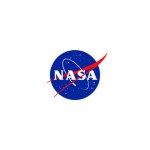NASA is seeking proposals from American companies to operate and use a system of free-flying robots on board the International Space Station. NASA hopes to continue to promote scientific, educational and technological developments in low Earth orbit for the benefit of all.
The colorful, cube-shaped robots – named “Bumble,” “Honey” and “Queen” – are part of the Astrobee system, which has been helping astronauts and researchers conduct technology demonstrations, scientific research and STEM (science, engineering, technology, and math) activities in the unique environment of space since 2018.
“Dozens of institutions are working with NASA to use the Astrobee system to test new hardware and software technologies,” said Jose Benavides, project manager for the Astrobee facilities at NASA’s Ames Research Center in California’s Silicon Valley, where the system was designed and built. “I’m excited to hear how respondents think Astrobee can further advance robotics in space.”
NASA has issued a Request for Information to support strategic planning, inviting industry to provide information to support the advancement of microgravity robotics to achieve the greatest scientific and exploration value. Responses are due by September 27, 2024. For more information on the Request for Information, please visit:
https://sam.gov/opp/7893fe01e7bf4ae69029b5d8915e62c5/view
The battery-powered robots of the Astrobee system fly around the space station’s modules using electric fans for propulsion and “see” their surroundings using lights, cameras and other sensors. They have interchangeable “arms” that allow the robots to hold objects or remain stable during tasks that require stability, and magnets ensure they stay securely docked while charging.
The robots work autonomously or are remotely controlled by astronauts, flight controllers or researchers on the ground. This allows them to take on time-consuming tasks. For example, the robots can work independently or together with others to help with routine tasks such as monitoring the space station, maintenance, inventory, documenting experiments or transporting cargo within the station. This gives the astronauts more time for complex tasks that only humans can perform.
Astrobee’s versatile design has enabled thousands of hours of testing on hundreds of microgravity experiments, many of which have involved astronauts, but the facility is also regularly used by researchers and student teams from around the world competing for the opportunity to run their programs on the robots in space.

Jonathan Barlow
Astrobee Project Manager
For example, NASA’s Integrated System for Autonomous and Adaptive Caretaking (ISAAC) project has used Astrobees to study how robots could assist spacecraft, vehicle systems and ground crews. The technology could help NASA use robots as caretakers for key spacecraft in the agency’s lunar-Mars plans, including the Gateway lunar space station and the Mars Transit Habitat Vehicle, particularly during the months-long periods when those spacecraft will be unmanned.
“Our work on ISAAC has proven their technology in a high-precision space environment with the immediate availability of the powerful Astrobee robots,” said Trey Smith, project manager for ISAAC at NASA Ames.
The project demonstrated the use of multiple Astrobees to autonomously perform the first robotically created survey of a spacecraft’s interior. Other ISAAC firsts include the first use of a robot to locate a sound source in space, in collaboration with Bosch USA’s SoundSee payload team, and the first time robots navigated between modules of a space station. Future robots could use ISAAC technology to transfer cargo between spacecraft or respond to a time-critical failure such as a leak due to a micrometeoroid impact – all without human intervention.
“With Astrobee, we learned how to fly multiple robots alongside humans in space,” said Jonathan Barlow, project manager for Astrobee at NASA Ames. “Advancing human-robot technology will pave the way for future manned and unmanned spacecraft servicing and exploration tasks performed by robots both off-planet and in space.”
The Astrobee facility, operated by NASA’s Ames Research Center, provides a free-flying robotic system for space station research and STEM education. Astrobee was funded by NASA’s Game Changing Development Program, part of the agency’s Space Technology Mission Directorate. NASA’s International Space Station Utilization Office provides ongoing funding.

